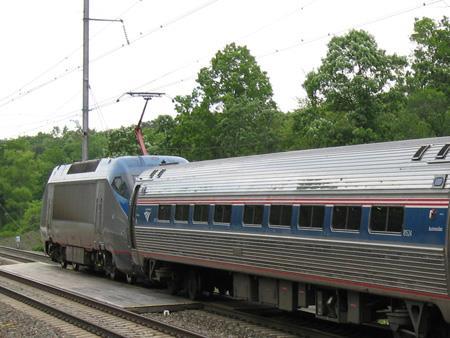
USA: The Federal Railroad Administration issued on April 2 a Preliminary Alternatives Report to mark the start of the Department of Transportation’s formal study of options to develop the Boston – New York – Washington Northeast Corridor.
FRA says its report, entitled ‘NEC Future’, is the first step to developing ‘a long-term investment programme for improving and growing the Washington DC to Boston rail service’. NEC Future sets out 15 alternative options which will be weighed against a control measure, essentially a ‘do nothing’ model which assumes historic rates of investment in transport in the corridor across all modes will continue until 2040.
The 15 options are aimed at answering a set of questions about future demand and service provision, which FRA groups into four thematic questions:
• Markets: where are travellers going, where is employment and population growth happening, and how would rail investment affect this?
• Rail: how do rail services access these markets?
• Service level: how much and what types of service are needed to meet future demand?
• Improvements: how can the necessary enhancements to meet this demand best be implemented?
The 15 Preliminary Alternatives have already been derived from ‘a large set of Initial Alternatives’, FRA says. They are grouped into four broad categories depending on the level of investment required, where A is a ‘low 2040 growth’ assumption maintaining existing services on the existing NEC infrastructure, and D is ‘an extensive expansion’ of the corridor to serve new markets, making use of international-standard high speed rail along a proposed ‘second spine’, for which four alternatives alignments are being considered. Category B covers ‘medium low’ options based on significant upgrading of the existing line, whilst the ‘medium high’ alternatives in Category C envisage upgrading with ‘targeted expansion to serve off-spine markets and expand NEC service options’.
Federal passenger operator Amtrak issued its Next Generation NEC vision in July 2012, which called for a phased investment programme culminating in construction of a dedicated high speed line between Washington and Boston after 2030 at a total cost of $151bn. NEC Future makes only passing reference to this study, suggesting that its findings will be fed into the assessment process, along with other investment proposals suggested by rail operators and transit agencies along the corridor.
FRA hopes to be able to have a ‘preferred alternative’ in place by the middle of 2015 to support an Environmental Impact Assessment.

















